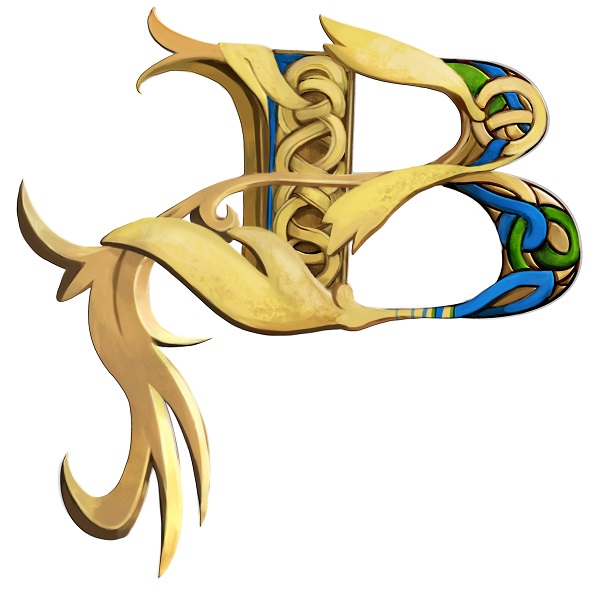The Book of Kells and the Illumination of Words and Worlds
Illustrated by Monica G Cabral
By the seventh to ninth centuries AD, the Northern Isles of Ireland were home to a large number of devout religious communities. But the spread of Christianity to such isolated regions of Northern Europe had been a slow process.
The introduction of the Roman Christian into the region was met by local people with much resentment because the language surrounding the religion–namely, Latin–was not inviting to the Celtic and Germanic locals. Most of these groups were not literate in their own tongues, let alone that of the Roman Church.
As a result, a diverse group of religious monks set off on a mission to bring to these communities adapted versions of the gospel text that the Celts of Ireland, Britain, Wales and Scotland could understand.
 These monks worked for decades on translating and decorating the gospels from Latin into Anglo-Saxon, a precursor to our modern English language. This monastic community was located in a scriptorium that had been established in 563 AD by St Columba in Iona, Argyll Scotland.
These monks worked for decades on translating and decorating the gospels from Latin into Anglo-Saxon, a precursor to our modern English language. This monastic community was located in a scriptorium that had been established in 563 AD by St Columba in Iona, Argyll Scotland.
However in 806 AD, a severe Viking raid displaced the Columban monks, who then took refuge at a new monastery in Kells, County Meath, Ireland, just outside of Dublin.
The Book of Kells is one of the most impressive illuminated manuscripts attributed to this scriptorium. The luxury book contains the four Gospels written on vellum (pages made from calfskin) and decorated with intricate patterns and images surrounding the religious text.
Historians have been able to piece together some information about the book’s creators, but certain questions regarding the manuscript’s exact origins, functions and audience will likely remain a mystery.
Researchers recognize at least three major artists and four scribes for their individual work on the Book of Kells. In fact the book was never finished, because the manner of producing such an elaborate book required decades of skilled labour, and the threat of Vikings still disrupted these communities.
This context of fear and violence was deeply rooted within these Celtic communities, and Christianity emerged as a means of escape and opportunity for these people to practice and implement higher ideals.
Part of the initial reasons for creating this lavish, ornamented book was to honor God and the surrounding scriptures’ divine and authoritative qualities. The further process of integrating visual representations and a bold script style known as the “insular majuscule” made it more appealing to individual contemplation of these sacred texts.
During this period when virtually the only people who were literate were religious scribes and monks, the creators of the Book of Kells were essentially ‘illuminating’ the world around them. In the process, old Celtic art traditions fused with Christian society, creating a number of complex and abstract images in the Book of Kells that the set the foundations for an Anglo-Saxon civilization.
The manuscript has full pages of decorations also known as the canon tables dedicated to the evangelists. Associated with the images each evangelist is a symbol and iconographical element. The Chi Rho page begins Matthew’s account of the nativity, and is one of the most famous examples of medieval art. The ink and colours used were imported from the Near East and the Celtic style of intertwining lines, knots and the incorporation of zoomorphic details within the letter initial is a sign of the transformation of the Irish, Celtic culture and the Hiberno-saxon art.
Today there is often an association between the enlightenment of people and revelations by the divine. However, in the case of the Book of Kells, it was humans––monks dedicated to celebrating God––who provided others with their vision of what an ideal world might look like.

Comments
No comments posted yet.
You have to be registered and logged in in order to post comments!